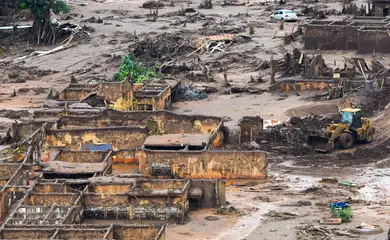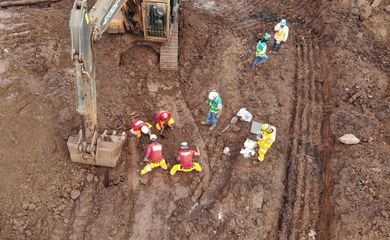Brazil: Vale to pay BRL 527 million for Barão de Cocais repairs

The Public Prosecutor's Office of Minas Gerais, in conjunction with the Federal Public Prosecutor's Office, and the Public Defender's Office of Minas Gerais, has reached an agreement with mining Vale to define measures for repairing the damages incurred in Barão de Cocais, Minas Gerais state. In this municipality, over 400 residents were compelled to evacuate their homes due to the potential breach risk of the Sul Superior dam at the Gongo Soco mine. The municipal authorities have also endorsed this agreement.

As per the agreement, Vale will contribute a total of BRL 527.5 million. This sum encompasses approximately BRL 44.5 million, which the mining company has already designated for incurred expenses related to restitution efforts, advance compensation, and emergency assistance.
The hazards linked to the Gongo Soco mine were identified during inspections conducted after the Brumadinho tragedy in early 2019, where a collapse of another Vale dam resulted in 270 fatalities. Subsequently, the National Mining Agency and the Public Prosecutor's Office of Minas Gerais instituted measures demanding a reevaluation of safety conditions for various structures.
In instances deemed most critical, evacuations were ordered for areas susceptible to tragedy in the event of dam failure. Altogether, nearly a thousand individuals were forced to vacate their residences across Minas Gerais. In Barão de Cocais, evacuations commenced in February 2019, encompassing the communities of Socorro, Vila do Gongo, Tabuleiro, and Piteiras.
Imminent Risk
The Sul Superior is one of three dams classified at level 3 by the National Mining Agency, denoting an imminent risk of rupture. This dam was constructed using the upstream raising method, the same technique associated with the Brumadinho disaster. Prior to this, in 2015, a similar structure failure occurred in Mariana, Minas Gerais, causing 19 casualties and impacting numerous municipalities within the Doce River Basin.
Vale asserts that the Sul Superior dam, built in 1982, was decommissioned in 2008 and it will be continually monitored until its total closure.
Programs
The agreement for the restoration of Barão de Cocais was formalized on August 18 during a hearing presided over by Judge Ana Paula Nannetti Caixeta, from the Minas Gerais Court of Justice. It culminates a public civil action initiated by the state prosecutor's office, demanding various initiatives to benefit the affected communities. However, those impacted assert they were not involved in the negotiation sessions.
In response, the Public Prosecutor's Office maintains that the agreement was crafted through dialogue with the affected families. It emphasizes the allocation of resources for public health policy development within the municipality as one of the significant aspects. Six programs have been outlined, addressing: Barão de Cocais' restoration and development; income transfers; tourism and culture revitalization; security enhancements; municipal public service strengthening; and addressing the demands of affected communities.
The agreement was also endorsed by the Archdiocese of Mariana, entrusted with the restoration of Barão de Cocais' oldest church, Mãe Augusta do Socorro Church, constructed in 1737. This restoration project is to be carried out by Vale.
The mining company has issued a statement asserting its commitment to the recovery of impacted communities through this agreement. "An independent technical audit will be engaged to oversee the agreement's outcomes, in addition to independent technical consultancy to aid affected communities in selecting, developing, and presenting projects," the statement concludes.
Many families who evacuated their homes in 2019 remain in residences provided by Vale, with no immediate return plans, contingent upon the completion of the dam's de-characterization process. Some residents have been allowed to return to certain areas, although the situation remains fraught, as reported by resident Cleonice Martins Gomes during a public hearing on the matter held three months ago by the Minas Gerais Legislative Assembly.
"We live in constant fear. When we hear an ambulance siren, we think it's the dam's alarm. We now take prescribed medications that we didn't require before, like blood pressure medicine. We're bearing these expenses ourselves," she stated. At that time, Gomes lamented the lack of support for those affected and demanded compensation from Vale for the devaluation of properties. She noted that the families' rights had been violated by the mining company, which had not listened to their concerns.
In June 2019, those affected secured the right to monthly emergency aid to be provided by Vale. In 2020, Vale sought to discontinue this aid through the courts, arguing that it fell under government welfare responsibilities. However, this argument was rejected, and the aid continued.
De-characterization
Following the Brumadinho disaster, the National Mining Agency issued a resolution establishing timelines for the elimination of all dams constructed using the upstream raising method. In Minas Gerais, this matter was specifically addressed by the Mar de Lama Nunca Mais (Sea of Mud Never Again) law, which mandated the completion of the entire process within three years.
This deadline expired in February of the previous year, with only seven of the 54 such dams in the state being fully de-characterized. Faced with this situation, the Public Prosecutor's Office initiated discussions with several mining companies to establish new commitments, including compensation payments.
In August of the previous year, Vale presented a revised timetable, outlining the complete elimination of all structures constructed using the upstream raising method by 2035. The de-characterization of the Sul Superior dam in Barão de Cocais is slated for completion in 2029, according to Vale.






